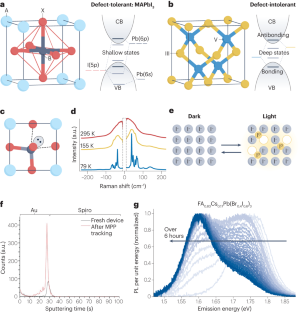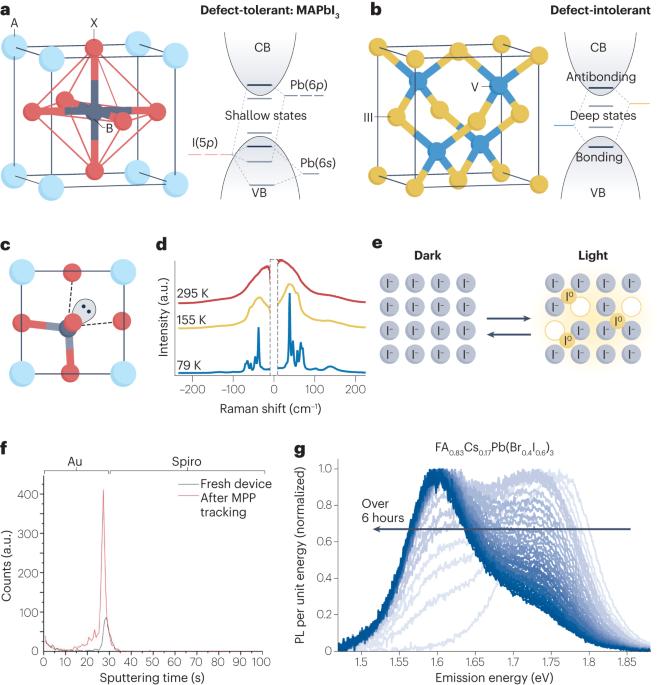钙钛矿光伏的长期运行稳定性
IF 86.2
1区 材料科学
Q1 MATERIALS SCIENCE, MULTIDISCIPLINARY
引用次数: 0
摘要
包晶体太阳能电池已显示出技术经济竞争力所需的效率。针对光伏技术对稳定性的苛刻要求,许多技术已被用于提高包晶体太阳能电池的稳定性,并且在十年的研究过程中取得了巨大进步。尽管如此,人们对包晶石太阳能电池稳定性的了解和解决仍然有限。在本综述中,我们总结了单结铅基包晶光伏稳定性方面的研究进展,并讨论了化学稳定性的起源,以及在一系列相关应力条件下化学稳定性对稳定性的影响。我们重点介绍了几类突出的稳定性增强策略,包括成分调整、阻挡层和稳定传输层的制造。在本综述的最后,我们讨论了仍然存在的挑战,并展望了该领域如何才能继续前进,实现 25 年和 30 年稳定的过氧化物太阳能模块。尽管与硅太阳能电池相比,现在的包晶体太阳能电池具有极具竞争力的效率,但迄今为止,其低稳定性阻碍了其商业应用。本综述总结了过去十年中取得的巨大进步,并对如何实现 25 年稳定的光致发光体太阳能电池提出了展望。本文章由计算机程序翻译,如有差异,请以英文原文为准。


Long-term operating stability in perovskite photovoltaics
Perovskite solar cells have demonstrated the efficiencies needed for technoeconomic competitiveness. With respect to the demanding stability requirements of photovoltaics, many techniques have been used to increase the stability of perovskite solar cells, and tremendous improvements have been made over the course of a decade of research. Nevertheless, the still-limited stability of perovskite solar cells remains to be fully understood and addressed. In this Review, we summarize progress in single-junction, lead-based perovskite photovoltaic stability and discuss the origins of chemical lability and how this affects stability under a range of relevant stressors. We highlight categories of prominent stability-enhancing strategies, including compositional tuning, barrier layers and the fabrication of stable transport layers. In the conclusion of this Review, we discuss the challenges that remain, and we offer a perspective on how the field can continue to advance to 25-year and 30-year stable perovskite solar modules. Although perovskite solar cells now have competitive efficiencies compared with silicon solar cells, their low stability has hindered their commercial application thus far. This Review summarizes the tremendous improvements made over the past decade and offer a perspective on how to reach >25-year stable perovskite solar cells.
求助全文
通过发布文献求助,成功后即可免费获取论文全文。
去求助
来源期刊

Nature Reviews Materials
Materials Science-Biomaterials
CiteScore
119.40
自引率
0.40%
发文量
107
期刊介绍:
Nature Reviews Materials is an online-only journal that is published weekly. It covers a wide range of scientific disciplines within materials science. The journal includes Reviews, Perspectives, and Comments.
Nature Reviews Materials focuses on various aspects of materials science, including the making, measuring, modelling, and manufacturing of materials. It examines the entire process of materials science, from laboratory discovery to the development of functional devices.
 求助内容:
求助内容: 应助结果提醒方式:
应助结果提醒方式:


